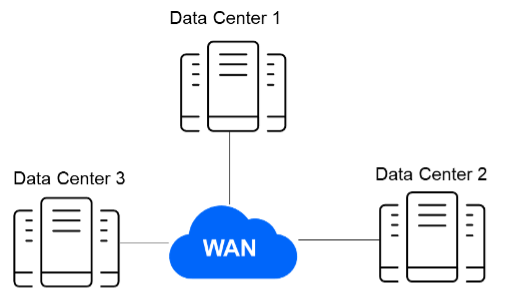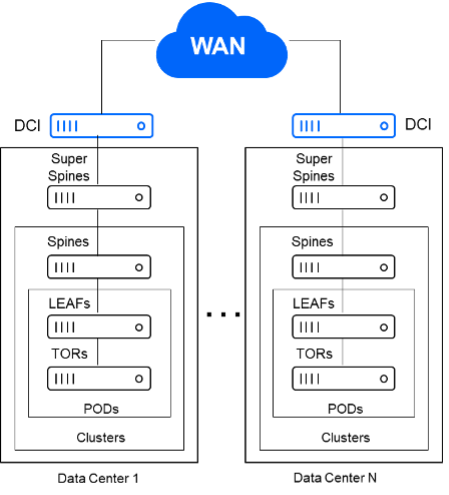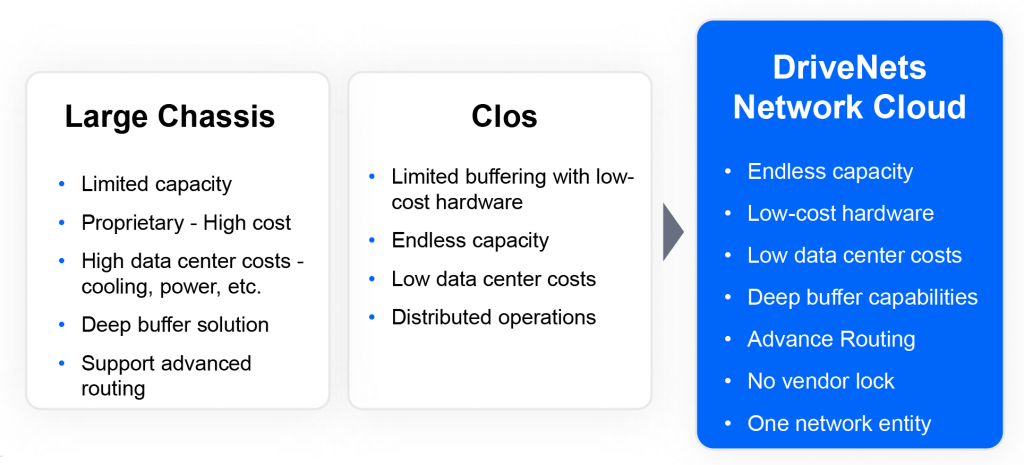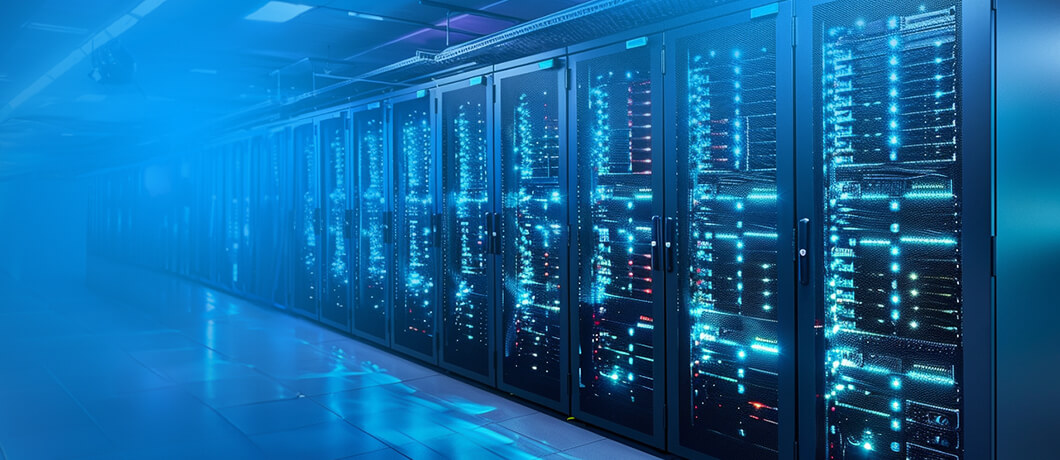Due to its success and operational advantages, the cloud’s flexible model has extended to hyperscalers like Meta, Google, TikTok, and others. The ability to offer any service globally, such as storage, compute, and video, has created a reality where hyperscalers and cloud providers are exponentially expanding their data centers. At the same time, they are simultaneously offering more complex services such as AI cloud and GPU as a service (GPUaaS), which demand higher-performance and low-latency connectivity.
To build this cloud capability, hyperscalers and cloud providers are employing data center interconnect (DCI) solutions. In short, DCI is the process of linking multiple data centers together to achieve business or IT objectives. However, these service providers (SPs) now require new DCI capabilities to support current, emerging and future services.
DCI and its Challenges
DCI is what actually makes data centers into a cloud. Hyperscalers and cloud providers are utilizing DCI to connect multiple data centers via WAN to create one global networking entity that allows them to offer a variety of services to anyone regardless of data center location. DCI enables these SPs to enjoy the benefits of high-performance connectivity, rapid resource allocation, geographic expansion, and higher availability.

DCI allows interconnecting multiple data centers
Most, if not all, data centers are based on the modern Clos architecture. Large-scale data centers typically include top-of-rack (TOR), leaf, spine, and super-spine layers. Beyond the super-spine layer, it’s common to build a new data center and connect it with other data centers using a fifth DCI layer.

DCI-Data centers’ fifth layer
Hyperscalers and cloud providers face several DCI-related challenges:
- Capacity: The rapid growth of traffic bandwidth requires DCI solutions capable of exponential capacity expansion.
- Cost: The use of proprietary hardware, combined with growing operational costs for power, cooling, and space, increases overall data center expenses; as a result, there is a need for a more cost-effective solution.
- Distance: Geographic expansion and data center conversions demand advanced long-haul optical connectivity solutions such as ZR/ZR+.
- WAN environment: Efficient and reliable DCI across WAN environments requires advanced routing capabilities such as those offered by Ethernet VPN (EVPN), segment routing, and Border Gateway Protocol (BGP).
- Deep buffering: To meet service-level agreements (SLAs) and avoid traffic congestion, especially for demanding services like AI cloud SPs need low-latency and lossless environments, which require advanced deep buffering capabilites.
Market Solutions for DCI
When looking at the available solutions for DCI used today by hyperscalers and cloud providers, we see three main options – large chassis, Clos architecture with stand-alone white boxes, and Distributed Disaggregated Chassis (DDC).
Let’s review how each of these options can solve the challenges faced by today’s hyperscalers and cloud providers…
Large chassis as a DCI solution can offer proven routing capabilities in the WAN environment. They are powerful enough to support deep buffering and lossless connectivity, as well as various modern long-haul connectivity methods. However, large chassis present cost challenges due to reliance on proprietary hardware and the significant power, cooling, and space requirements imposed by their monolithic structure. Additionally, while offering high capacity, they are not sufficient to address required exponential capacity growth.
Clos architecture is also a common solution for DCI. Connecting multiple stand-alone white boxes provides high scalability to accommodate any capacity demand. Standard white boxes offer reduced hardware costs and distributed power, cooling, and space requirements, lowering overall data center operational expenses. These white boxes can also meet any long-haul connectivity and routing requirements. However, commonly used white boxes may struggle to provide deep buffering capabilities due to insufficient compute and storage resources within the white boxes themselves.
DDC is a solution that some networking vendors have been experimenting with for DCI. DDC breaks the monolithic chassis hardware into independent components (white boxes) for flexibility and cost-efficiency, while still allowing them to be controlled as a single networking entity. DDC can solve the capacity problem since it can scale like Clos. Its inherent distributed approach and standard white box hardware reduce data center and hardware costs. Additionally, it can support any long-reach connectivity needs and, since it utilizes a scheduled fabric, it can deliver lossless connectivity and deep buffering capabilities.
The main challenge with DDC is that most vendors lack sufficient experience using it outside data center environments, resulting in insufficient WAN routing performance.
DriveNets solution for DCI challenges
DriveNets Network Cloud is based on DDC architecture. It breaks today’s big routers into building blocks, running cloud-native software on top of its distributed components to support any network use case from core to edge.
DriveNets Network Cloud is a battle-proven solution powering the world’s largest software-based network (AT&T), handling 725PB of data daily. DriveNets has successfully adapted its extensive experience in diverse networking use cases for DCI applications.
DriveNets approach to DCI offers the same core benefits of other DDC-based solutions, including: support for virtually unlimited capacity; advanced long-haul capabilities; deep buffering and lossless connections with scheduled fabric; and cost-efficiency through standard white box hardware and a distributed approach.
DriveNets’ X factor is its software-based routing capabilities. Proven in large-scale deployments for global tier-1 service providers in India, Japan, Europe, and North America, DriveNets Network Operating System (DNOS) supports all essential WAN routing protocols.
DriveNets Network Cloud adds the missing ingredients to make DDC a powerful DCI solution.

The best of all worlds – DriveNets Network Cloud DCI
Closing the DCI Gap
Hyperscalers and cloud providers face new challenges due to increasing capacity demands and emerging services like AI cloud high-performance computing (HPC), and Internet of things (IoT). The common market options for DCI – chassis, Clos and DDC – cannot offer a complete solution that addresses all challenges.
Leveraging its vast experience within service providers’ large-scale networks, DriveNets Network Cloud offers a comprehensive DCI solution for large-scale cloud environments.
Related content for AI networking architecture
DriveNets AI Networking Solution
Latest Resources on AI Networking: Videos, White Papers, etc
Recent AI Networking blog posts from DriveNets AI networking infrastructure experts
Download white paper
5 lessons learned from large network deployments




